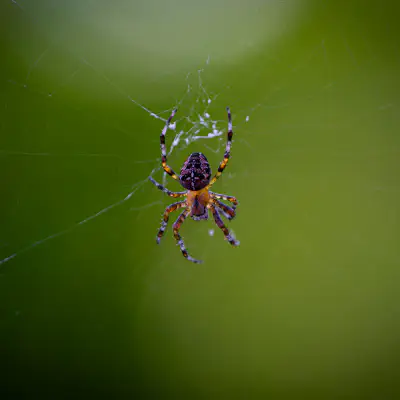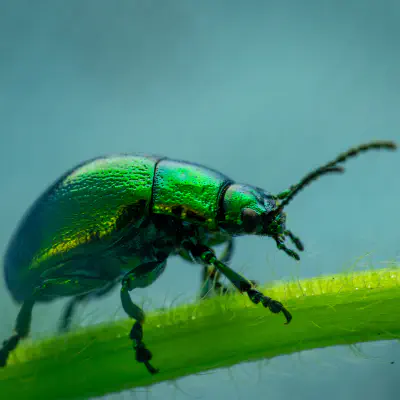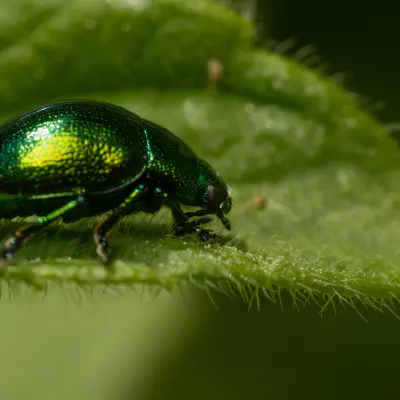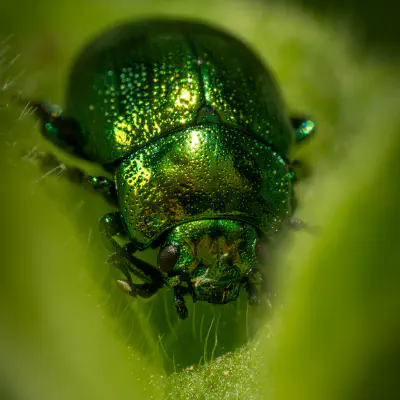The length of the green dock beetle varies between sexes, with the males being 4 mm and the females being 7 mm. During the mating season, females have enlarged abdomens. Both sexes are green with a metallic shimmer, which, depending on the light, can be gold green, blue, purple, violet, or red. The legs of this species also shimmer a metallic green, and are strongly built. The antennae are serrated and are medium in length.
Green Dock Beetle (lat. Gastrophysa viridula)
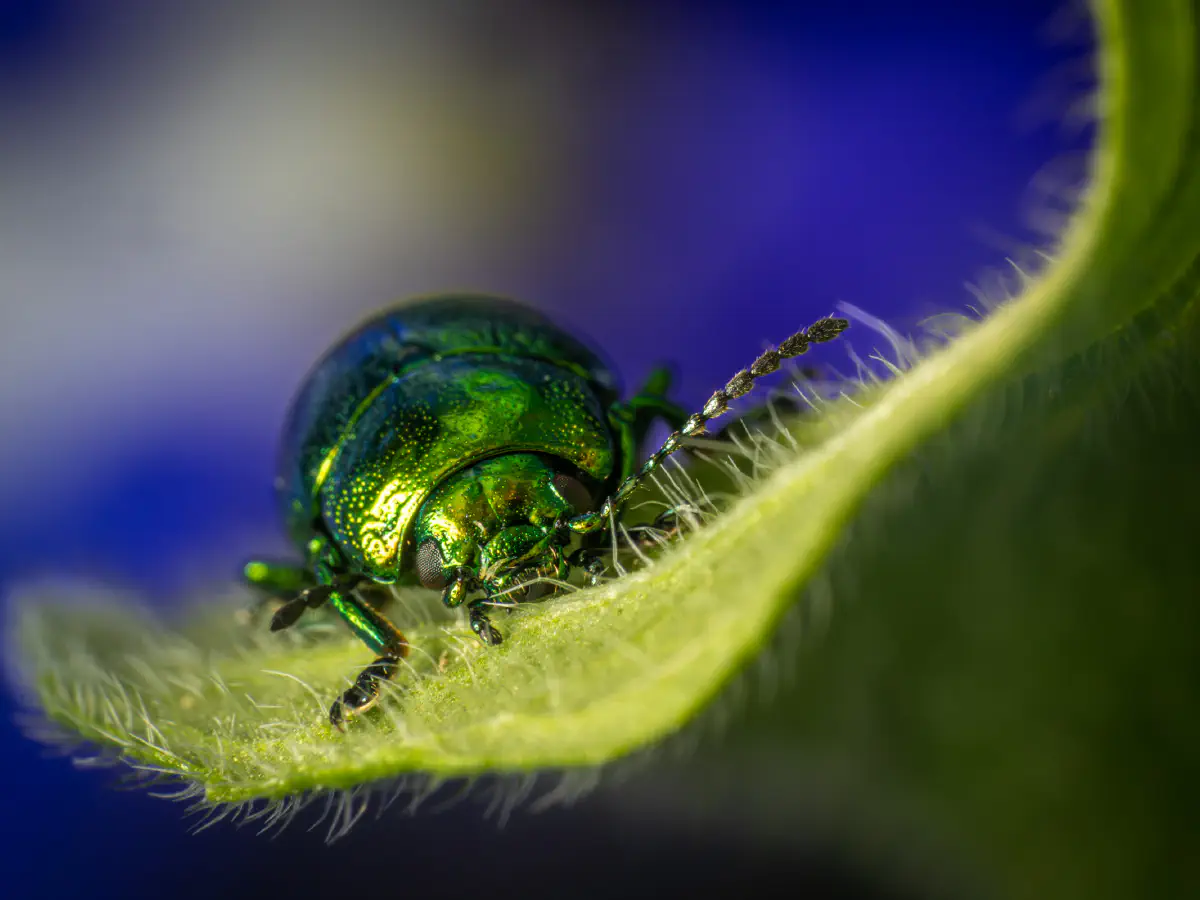
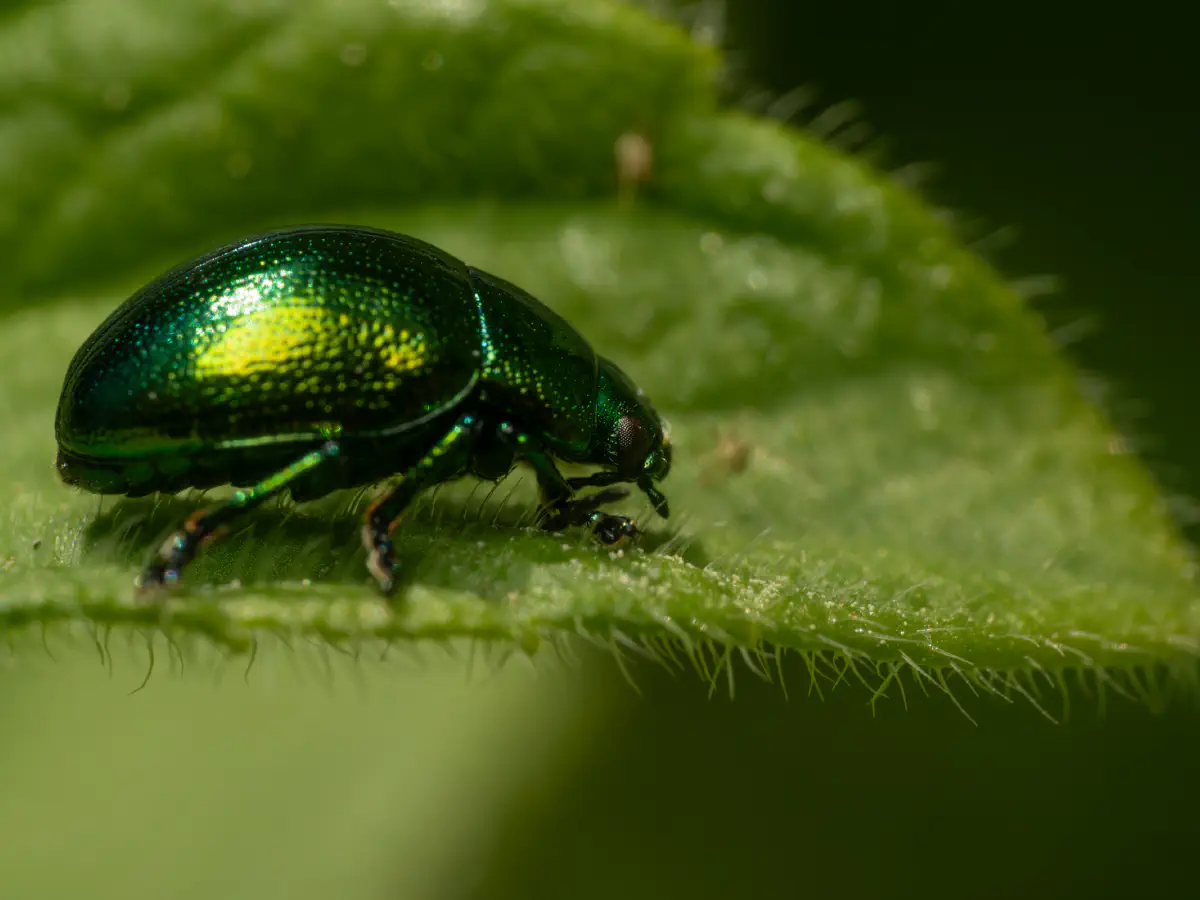
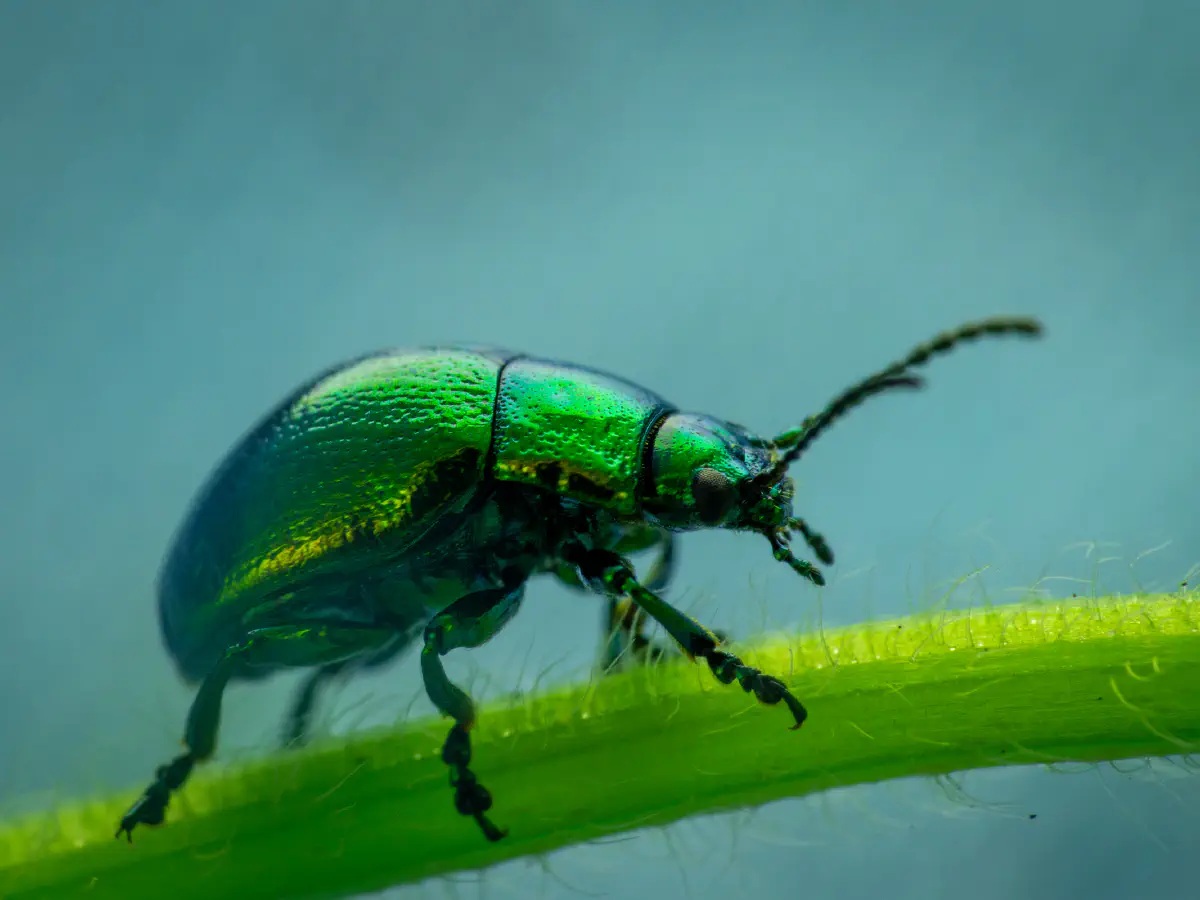



This is not intended to be a dry lexicon. Personal stories and sensitive articles form the framework for our pictures: „The paradox of security“
A tomcat and a cat meet. And a spider secretly listens in.
